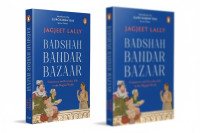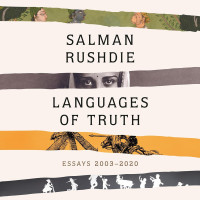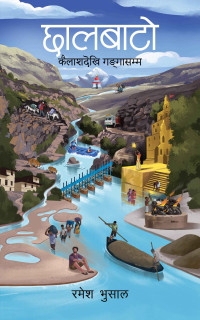Books
The Mughal state’s way to let people live, work and thrive
Jagjeet Lally’s ‘Badshah, Bandar, Bazaar’ is written for a lay audience, unafraid of complexity and interpretation and comfortable with storytelling.
Parvati Sharma
What history is fit to write? Over the past decade or so, it’s a question that has generated a great deal of noise and very little light. Much of the clamour has centred on Mughal history, which must, ideally, be eradicated; failing which, the Mughals must be shown up as monsters. (I met a teacher recently who was wryly concerned she might invite trouble if she took her students to an exhibition on the Taj Mahal.)
Underlying the question of what history should be written, however, is why some history acquires (or requires) more (or less) attention. Why has the right spent the last 30-odd years, since LK Advani’s Rath Yatra, attacking the Mughals? And why has the left been compelled to spring to their defence? The political answers are simple and obvious. The right follows the broken colonial record of divide and rule, trumpeting rhetoric of always-invading, always-foreign Muslim rulers to give Hindutva a cover of grievance with which to camouflage its attacks on Muslims today. And the left offers the instinctive moral response: to protect the vulnerable. There are times, however, when the simple and obvious explanation gives way like quicksand.
Earlier this year, for example, a friend from Nagpur complained about how little attention the Delhi media had paid to the aftermath of the riots in his city, which began with Hindutva threats to desecrate Aurangzeb’s grave. “Everyone is talking about Aurangzeb,” said my friend. “Nobody is talking about Nagpur.” Having spent much of the preceding weeks talking and thinking and writing about Aurangzeb myself, I was embarrassed. Had I fallen into a right-wing trap, one by which Aurangzeb served only to generate sound and fury to disguise immediate and real attacks on Muslim men and women? Was history not so much a battleground as a distraction?
In such confusing times, there is something oddly pleasurable about the fact that Jagjeet Lally’s Badshah, Bandar, Bazaar, an account of “commerce and everyday life in the Mughal world” is published under Penguin’s ‘business’ imprint, answering the what and why of history in a satisfyingly subversive stroke. What history is fit to write? That which teaches us how business was done. And why? Because a prosperous and stable economy–the ability to let people work and live well–is what gives any state its legitimacy.
When Lally turns to Aurangzeb, then, it is not to comment on his personality but to focus on his Fatwa-i-Alamgiri, a “monumental act of qanunization”, the canonisation of what might, today, be called black-letter law. The Fatwa-i-Alamgiri was part of a long-running series of negotiations between ‘official’ law–that is, the court of the state-appointed qazi–and other legal forums, both Muslim and Hindu (and later even British, like the Mayor’s Court in Bombay). Litigants could go ‘forum shopping’, they were not obliged to take their disputes to the qazi alone.
That they chose to, writes Lally, was testament to the Mughal court’s attention to local customs (which it “complemented… rather than competed with”) alongside its broader ubiquity and (especially following Aurangzeb’s fatwa) predictability. It was this, argues Lally, “the imperial centre’s renovation of the legal system [that] made the state powerful and ‘real’”–not imposition of its authority from above but engagement with its authority “bottom-up”, an engagement that kept the Mughal state alive even during its long decline.
Lally’s fascinating chapter on law is one of several prongs he uses to spear fragments of the past into a coherent whole. Perhaps inevitably, in a book that spans over 200 years in under 200 pages, Lally tells his story via vignettes, evocative and sometimes surprising. We watch, for example, the course of great trading caravans criss-crossing the silk routes, more regular than armies and almost as intimately connected to warfare. The merchants who travelled in the caravans had arrangements with pastoralists for protection (sometimes complemented, it seems, by the spiritual protection of Sufis and yogis).
We follow, too, a fictive Aggarwal boy–a life and times pieced together from disparate sources. How he acquires a precious education, spanning the secret shorthand used for family accounts to courtly Persian, a “lingua franca from the Balkans to Bengal”, learning from pandits in a pathshala and maulvis in a madarsa; how he is sent on his first business assignment to buy cotton in the countryside; how, gradually, he travels further away from home, across the Hindu Kush, growing ever more skilled in managing the delicate balance between close-knit, often secretive family business and rapidly expanding networks of trade. Globalisation during Mughal times means that New World pineapples are grown in Agra and Indian cotton is used to buy African slaves.
Commerce is not restricted to the Banias, however–a term that is itself, Lally notes, a “catch-all” for Indian traders, whether Khatri, Jain or Muslim. Thus, any Mughal prince who hoped to succeed in a system that had no use for primogeniture would need the support of mansabdars, the nobility, to shore up his bid for the throne. The mansabdars, in turn, relied for wealth and power on revenue from their jagirs—and the Mughal state’s insistence on receiving its agricultural taxes in cash, not kind, created working relations between its warrior-nobility and financiers.
A Mughal queen or princess would also have reason to participate in commerce, whether by running her own ships (as Akbar’s first Rajput wife and mother of Salim did) or by building markets and sarais–whether to gain spiritual merit for herself or political advantage for her chosen (male) contender, or to provide for herself in the not-uncommon event of the male contender’s defeat or demise. “The Mughal political elite were not aloof from commerce”, as often presumed of a polity that valued military, intellectual and aesthetic pursuits over ‘shop-keeping’. In fact, writes Lally, “their very existence depended on participation in rural and urban production cycles, in buying and selling.”
Such factors–a ubiquitous and reliable legal system; monetisation of the economy (via the demand for taxes in cash) and the development of banking and finance; increasing trade and widespread participation in commercial activity–created a “Pax Mughalica” that was widely understood as allowing for prosperity. So much so, in fact, that a colonial officer recorded a dirge lamenting the decline of the Mughals following Nadir Shah’s assault on Delhi in the 18th century. “Laia Taimur niwar, Babur nikalia tar”, it begins, “Taimur brought the cotton, and Babur spun it into thread”, and so on until Aurangzeb “made it bright like the moon”–only to have a “dissolute” Muhammad Shah vomit on the cloth, the stench attracting Nadir Shah “the dog”, who proceeded to tear the “chadar” draping Hindustan apart.
EH Carr once declared that “great history is written precisely when the historian’s vision of the past is illuminated by insights into the problems of the present.” What happens, however, when one of the most striking problems of the present is its vicious abuse of history as a weapon of mass distraction? When the very discipline of history is being undermined with rabid chants of ‘what historians never told you’, how does the professional historian react? Badshah, Bandar, Bazaar is one way: written for a lay audience, unafraid of complexity and interpretation and comfortable with storytelling. Everyone is always talking about the Mughals. Jagjeet Lally talks about the people who lived and worked (and often thrived) in the world the Mughals built.
Published in special arrangement with TheWire.in
___________
Badshah, Bandar, Bazaar
Author: Jagjeet Lally
Publisher: Penguin India
Year: 2025




 20.12°C Kathmandu
20.12°C Kathmandu










